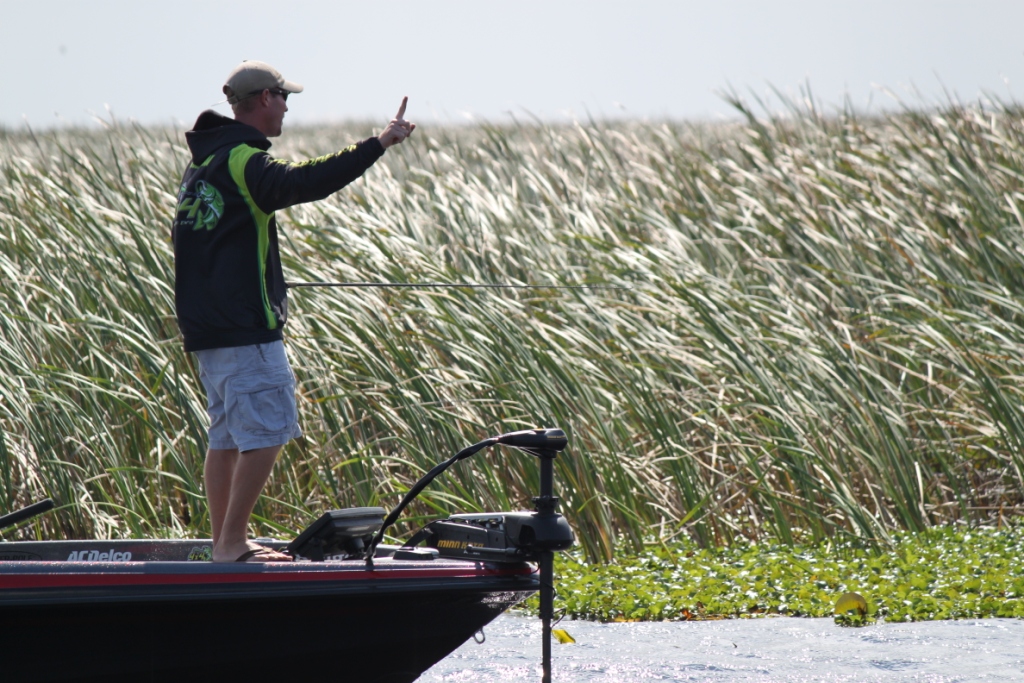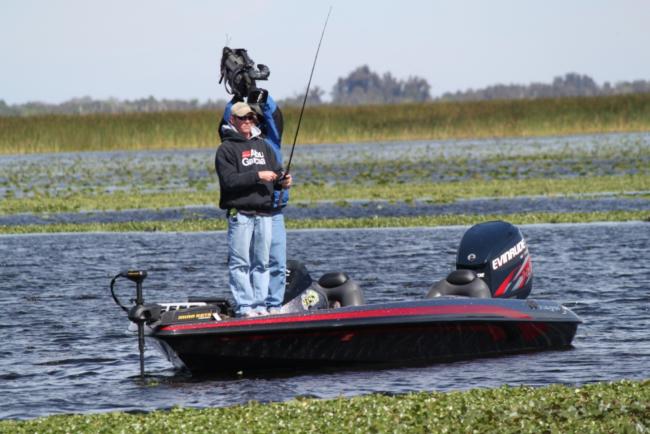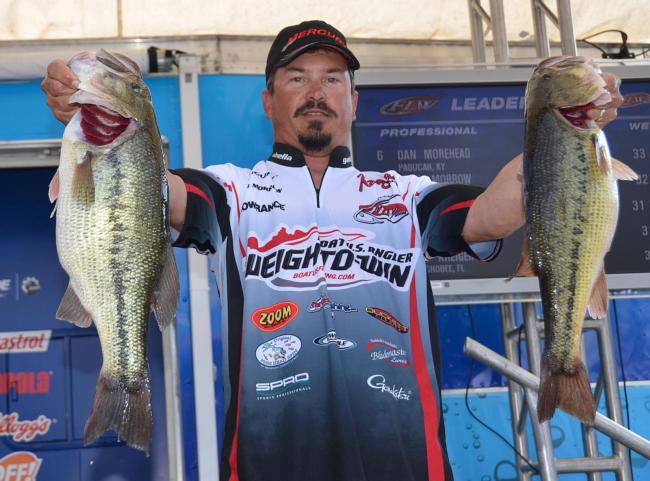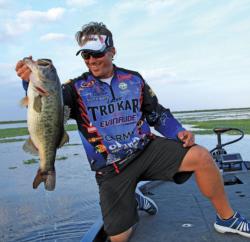Ask the Experts
FLW Tour pros weigh in optimal drag settings, the best hooks for braided line and how to decipher when grass mats are too thick for punching

(Editor’s note: This article originally appeared in the 2013 October issue of Bass Fishing magazine. To read more compelling articles from Bass Fishing magazine each month, become an FLW subscriber member. If you’d like to sign up for a digital subscription to access articles online, click here).
Q&A with FLW Tour pro Scott Martin, Brandon McMillan and Troy Morrow
Thick and Thin
Q: If I use heavy-gauge hooks for flipping grass with braided line, why not use the same gauge hooks for fishing all soft plastics?
 A: I try to get away with the heaviest hook I can. Any time you fish relatively shallow, you can get away with a big hook – a stout flipping hook or a hook made for braided line. In my opinion, thought, it seems like the deeper you fish, the lighter the hook you want. A lighter hook has a little more flex, and it kind of pricks the fish a little more. If you’re fishing 25 feet deep with a football jig, for instance, you want a light-wire hook because the distance between you and the fish and the stretch in the line make it harder to hook up with a heavy hook. The lighter hook penetrates more easily.
A: I try to get away with the heaviest hook I can. Any time you fish relatively shallow, you can get away with a big hook – a stout flipping hook or a hook made for braided line. In my opinion, thought, it seems like the deeper you fish, the lighter the hook you want. A lighter hook has a little more flex, and it kind of pricks the fish a little more. If you’re fishing 25 feet deep with a football jig, for instance, you want a light-wire hook because the distance between you and the fish and the stretch in the line make it harder to hook up with a heavy hook. The lighter hook penetrates more easily.
– Brandon McMillan, Clewiston, Fla.
A real drag
 Q: Since braided line has almost no stretch, what’s the best way to set my reel’s drag if I use braid with a spinning combo?
Q: Since braided line has almost no stretch, what’s the best way to set my reel’s drag if I use braid with a spinning combo?
A: I set mine so that my drag slips on the hookset. I want some slip because if I’m using it on a spinning rod, it’s a light-line situation and I’ll be using a fluorocarbon leader. The leader is the only place it’s going to fail because braid is not going to fail. I have to have that drag slip on my hookset so I don’t break my light leader.
I use 16-pound-test braid. Depending on the fishery, the heaviest leader I’ll ever use is 10-pound test, but that’s rare. Five- to 8-pound test is my norm, with 7-pound test the most common. I don’t like to go to 5-pound test, but if I have to, I will.
– Troy Morrow, Eastanollee, Ga.
Grass armor
Q: Have you encountered any situations where matted grass is actually too thick for punching?
 A: There are times that it’s too thick. Early in the year, when the hydrilla first comes up, a lot of times it’s so new and thick and healthy in its growing stage that there aren’t openings underneath the mat – it’s too uniform underneath the water. The fish don’t like to use it because there are no “caverns” or canopies to hang out and ambush. Later in the year, as the matted grass cuts off the sunlight penetration enough to kill off some of the grass beneath it, it creates a canopy over open spaces in the water. Then they’ll use it.
A: There are times that it’s too thick. Early in the year, when the hydrilla first comes up, a lot of times it’s so new and thick and healthy in its growing stage that there aren’t openings underneath the mat – it’s too uniform underneath the water. The fish don’t like to use it because there are no “caverns” or canopies to hang out and ambush. Later in the year, as the matted grass cuts off the sunlight penetration enough to kill off some of the grass beneath it, it creates a canopy over open spaces in the water. Then they’ll use it.
Another situation occurs when the wind blows really hard on a shallow grass line. It compacts the grass really, really tight, and a lot of times it will stack the grass, especially if it’s floating grass, such as chopped-up grass or hyacinths. It will compact that mat so tightly that it’s hard to get even a 2-ounce weights through it. Or it makes it so thick that there are no caverns.
Here’s the way to know if you’re going to stay or go. Flip through the mat. Once it gets through the top layer and falls through the water column, lift up. If it feels really clean underneath, that’s a good indication that it’s the right density. If you bust through and it goes down 6 inches and stops, and you can feel the thickness of the grass all the way through the water column and are hitting things all the way u and down, a lot of times that’s not the best kind of grass.
– Scott Martin, Clewiston, Fla.